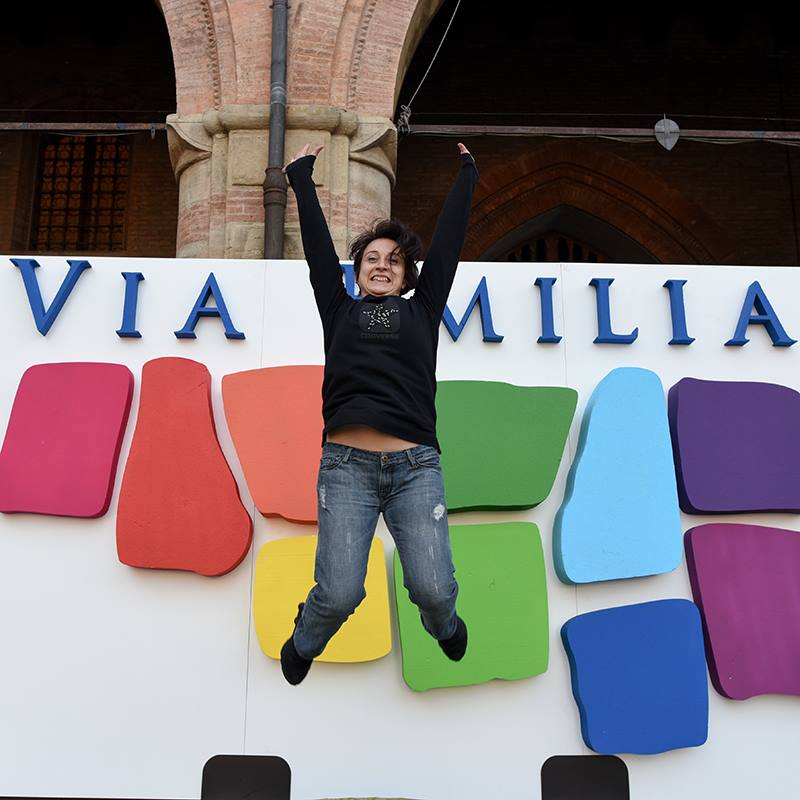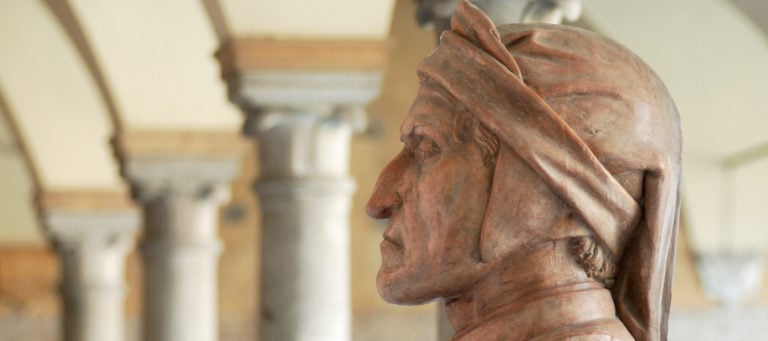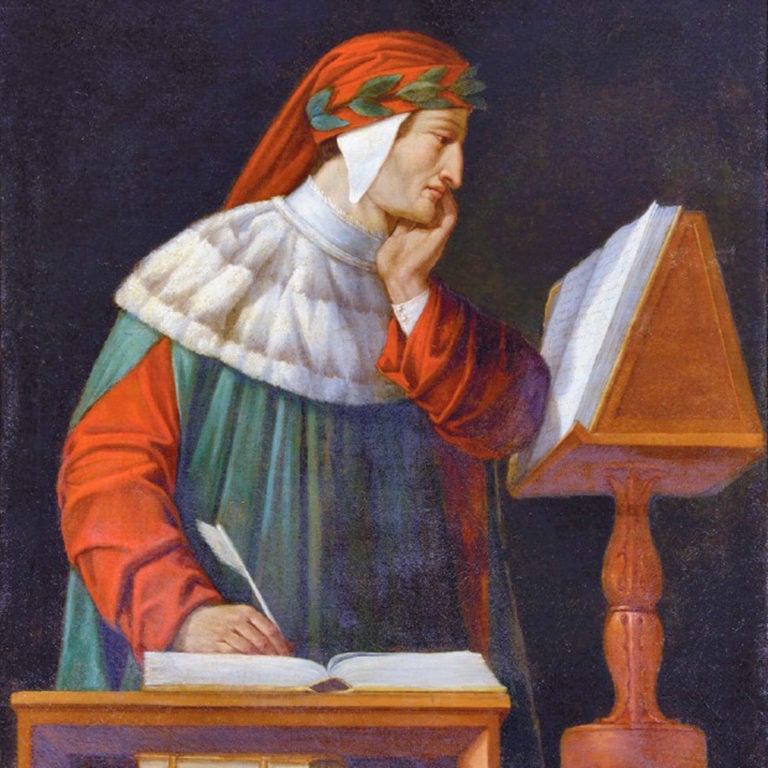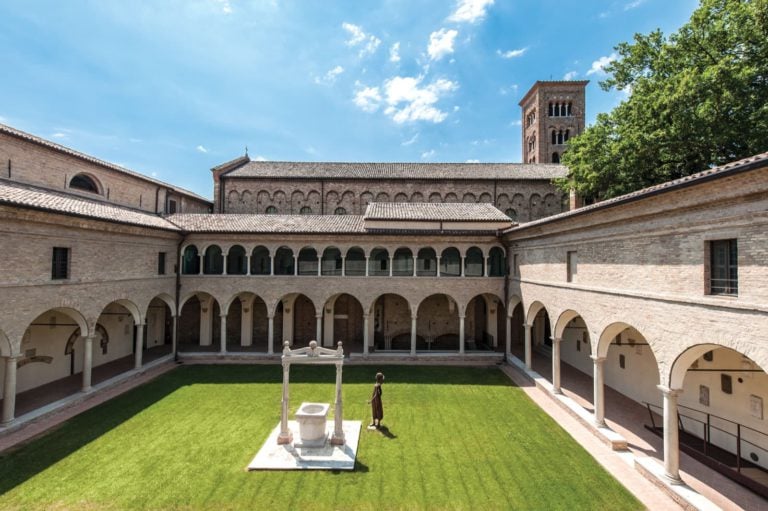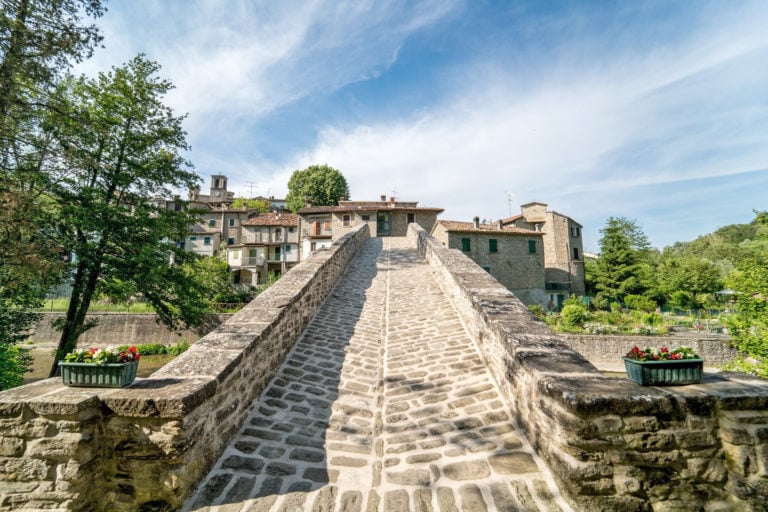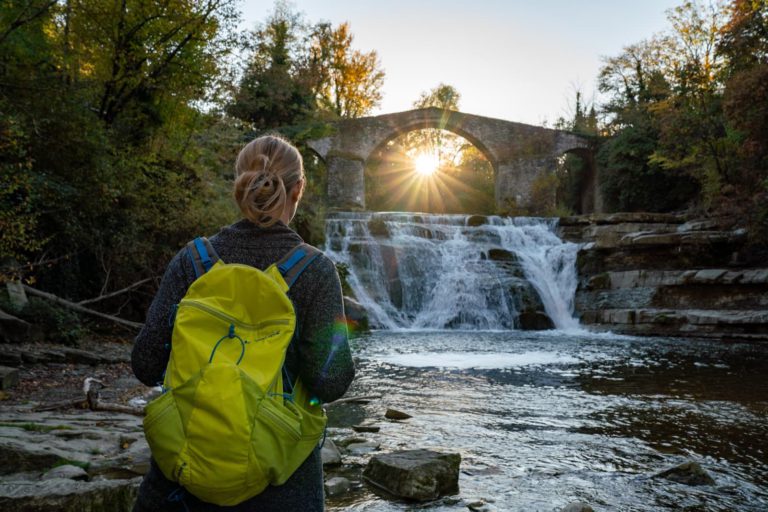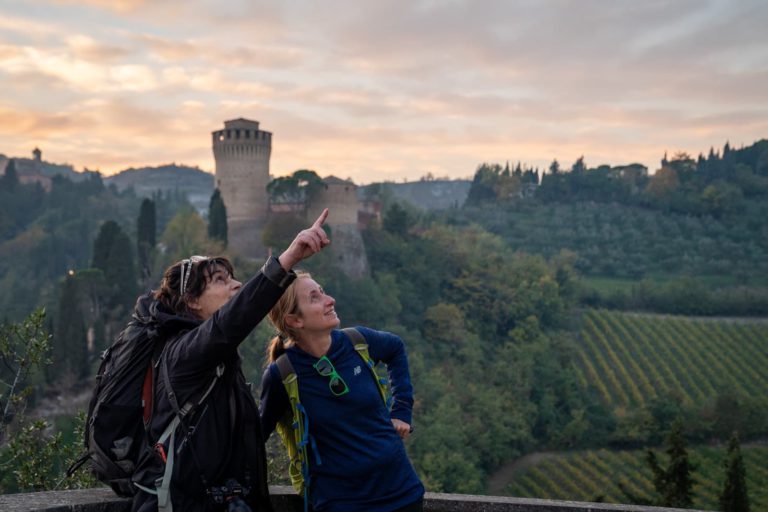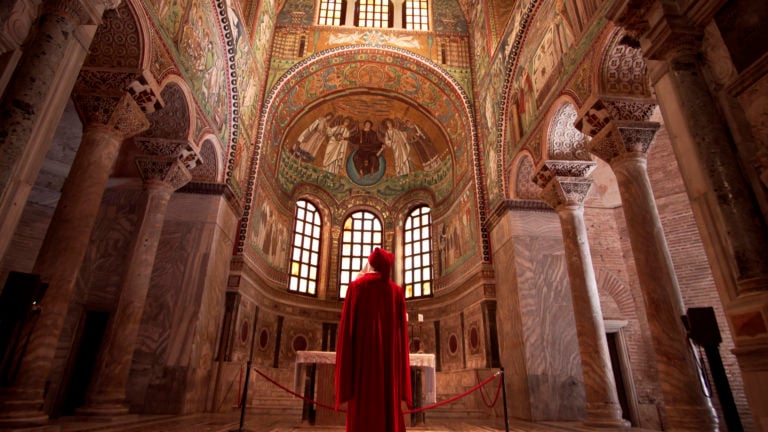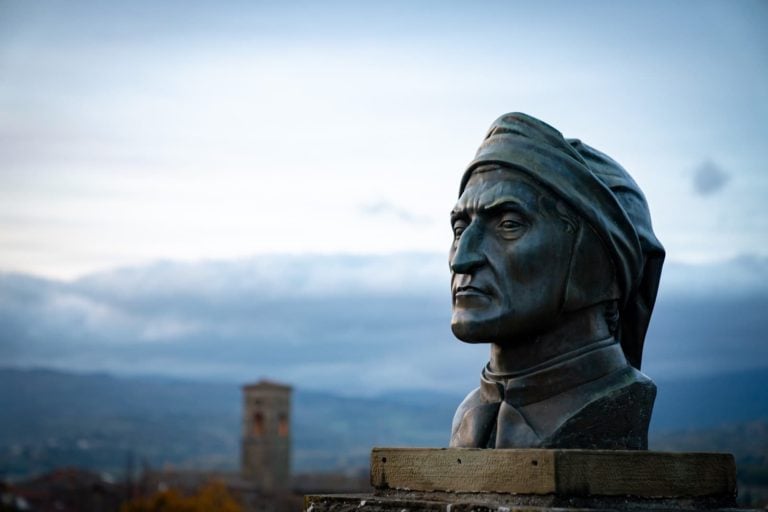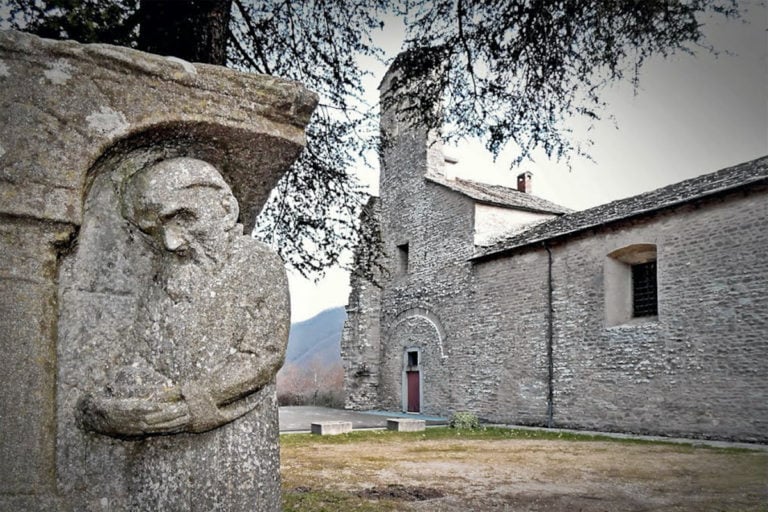Every Italian knows that Dante Alighieri was born in Florence, Tuscany – birthplace of the Italian language. But not everyone is aware that he died in Ravenna, after a long and nomadic exile, as a guest of the Da Polenta family in 1321.
So come with us on a jaunt around Romagna and Tuscany on the trail of Italy’s greatest poet. Following Dante’s Routes, we set out from Byzantine Ravenna, a UNESCO World Heritage city, bound for beautiful Faenza, the world centre of ceramics, before winding up in the picturesque mediaeval town of Brisighella.
From craft workshops and museums to Romanesque churches and colourful traditions, this trail of pretty walled villages set in unspoilt country is a unique experience to savour slowly. Whether you follow it on foot or by bike, by rail or on the bus, you’ll find everything here is on a human scale. And it’s all endorsed by top international travel guide Lonely Planet as its 2021 Best in Travel destination for Italy in the sustainability category.
This major thumbs-up celebrates an open-air kind of tourism exploring places in Romagna and Tuscany that Dante mentioned in his Divine Comedy or experienced himself in exile. And what better year to discover it all than the 7th centenary of his death.
So let’s roam this land and enjoy the authentic, warm local hospitality, the timeless allure of these fascinating places, and the fabulous quality of life they offer.
STAGE 1: RAVENNA
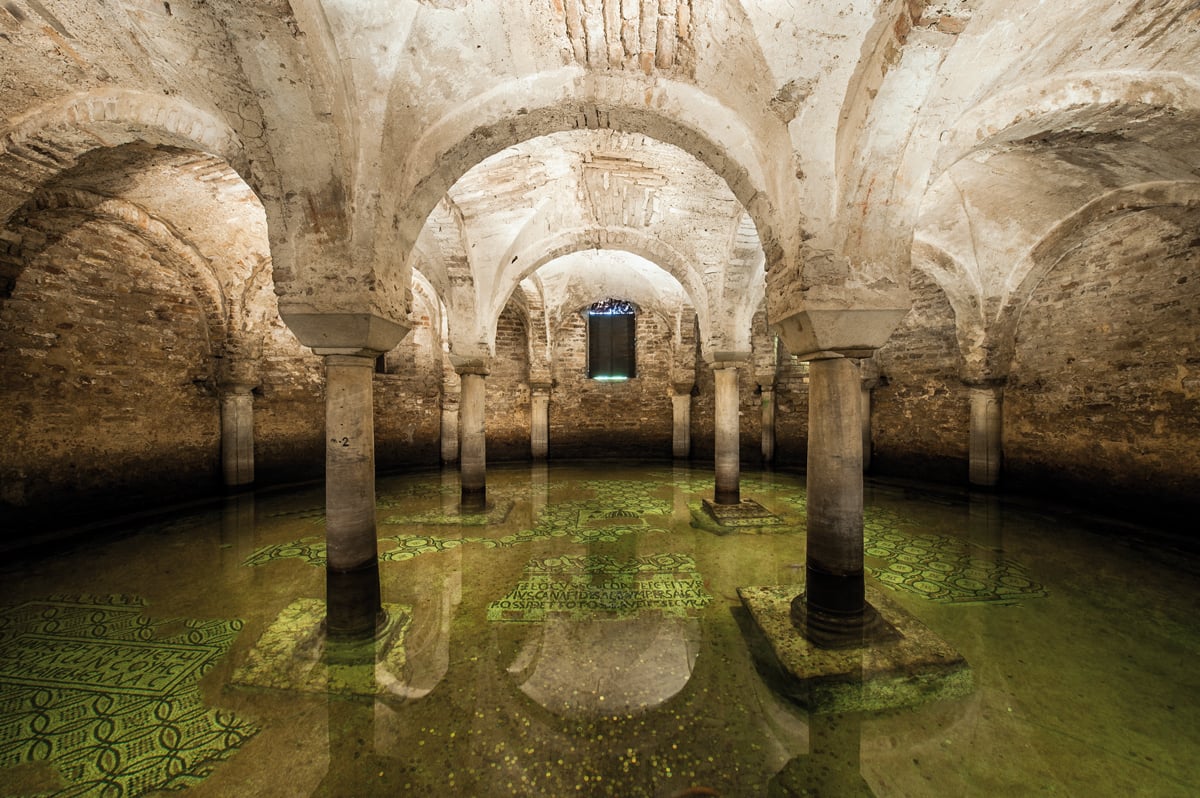
The Crypt of Basilica di San Francesco (Ravenna) | Ph. Nicola Strocchi, Ravenna Tourism Archive
RAVENNA, the former capital of the Byzantine Empire and treasure trove of world-renowned mosaics, had a special place in Dante’s life.
After he was exiled in 1302, his incessant quest for refuge took him to Forlì, Padova, Treviso, Lunigiana, Casentino, Lucca, Verona and, finally, Ravenna in 1318.
Dante’s final years were peaceful, spent at the court of Guido Novello Da Polenta. It was a time of family life, diplomatic missions and writing the Paradise. He also established a literary circle frequented by his sons and various young local literati, finally dying during the night of 13 and 14 September 1321.
These are the must-see Dante highlights in Ravenna:
- Dante’s Tomb: affectionately known by the locals as the zuccheriera – the sugar bowl – for its pale colour and rounded shape, it was completed in 1781 in immaculate neoclassical style. The architrave bears the inscription “Dantis poetae sepulcrum” (the tomb of Dante the poet). Every year, the anniversary of his death is marked by the Oil Ceremony, Florence’s tribute to its exile, on 13 September. The Tuscan capital has provided a lamp and the oil to keep it burning constantly at the great poet’s tomb as a gift since 1908.
- St Francis’ Basilica: this magnificent 14th-century religious and cultural landmark was the setting for his funerals. Visitors to this humble yet solemn place can also enjoy a delightful surprise: water has invaded the mosaic floors of the crypt (they’re below sea level), and goldfish swim nonchalantly around. Every year, a ceremony commemorates his death.
- The Dante Museum: inside the Franciscans’ Dante Centre, the evocative setting of the old cloisters (opened in 1921 on the 6th centenary of the poet’s death) is a mine of Dante-esque iconography. There are memories aplenty of his funerary monument and the story of how the poet’s bones were moved. It also offers versions of the Divine Comedy in several languages, to engage visitors of all ages and nationalities.
- The Quadrarco di Braccioforte: this small four-arched oratorio between Dante’s tomb and St Francis’ Basilica housed the poet’s remains during World War II, near the mound.
- The Da Polenta House: dating from the 1200s, it belonged to the family that took Dante in.
- The Classe Pinewood (a few miles from town): an inspiration for the enchanted forest in the earthly Paradise where Dante and Virgil walked, a place redolent with fragrant flowers and pine trees, where the air gently flutters the fronds (Purgatory, Canto XXVIII).
A souvenir to take home: a Dante-themed mosaic.
A postcard to send: take a selfie in front of the Dante murals by Brazilian street artist Kobra.
Ravenna, we mustn’t forget, figures prominently in the Divine Comedy. It is mentioned both by name and through poetic allusion. Francesca da Rimini – daughter of Guido Da Polenta (Renaissance Lord of Ravenna) and wife of Giangiotto Malatesta – is the best-known of the many Ravenna notables who appear on Dante’s journey, and his sympathetic portrayal of her is rightly famous.
STAGE 2: FAENZA
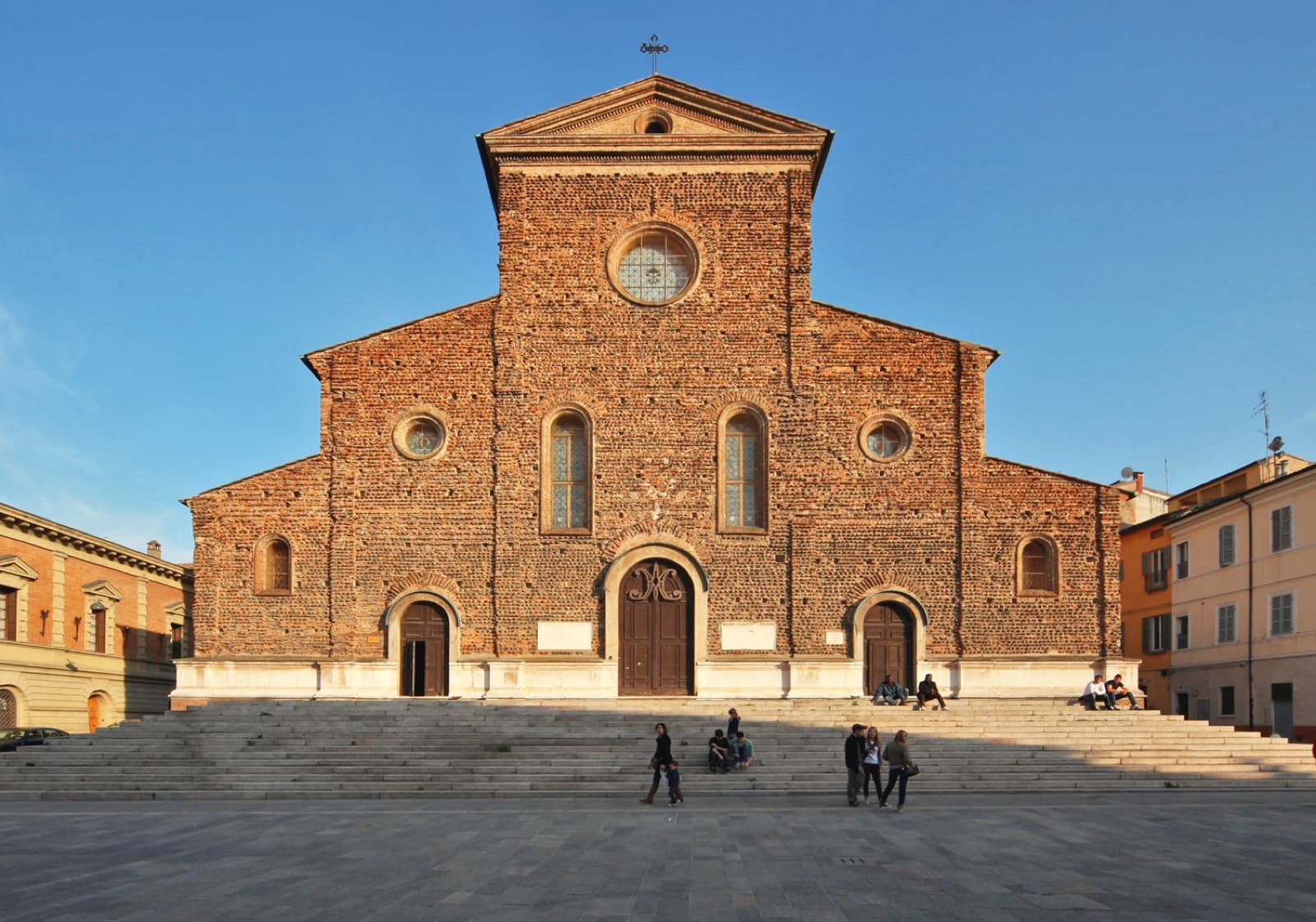
Faenza’s Cathedral
The Via Faentina is the main artery linking Romagna and Tuscany, so a stop-off in this little city on the Via Aemilia is de rigueur on our slow tour of Dante’s haunts.
FAENZA, the ancient-Roman city of Faventia, has become synonymous with ceramics (maiolica) in many languages: faïance in French, faience in English.
This is an ancient art: the earliest workshops date back to the 1st-century bc. The clay from the River Lamone was surely highly prized by Dante’s day, even if it was only in the Renaissance that it acquired international renown.
The buildings that Dante would have known include:
- The Church of the Commenda: this hospice-church offered accommodation for pilgrims bound for the Holy Land from 1137; records from 1301 link it to the Order of the Knights Hospitaller. It was commonly known as the magione, from the French maison, a typical moniker for hospitaller houses.
- The Church of San Bartolomeo: built in the early 13th century, this is one of the city’s oldest buildings. Part of the original structure remains intact.
- Palazzo del Podestà: this government building is a testament to the political system of Dante’s era. Recent research suggests it was completed in 1175; originally, it must have been much larger. The large three- and five-light Romanesque windows typify the style of the time.
Two enduringly popular annual events link Faenza to nearby Tuscany. The unmissable 100 km del Passatore in MAY is an international fun run between Florence and Faenza on a beautiful course across the Tuscan-Romagna Apennines; and the Chestnut Festival in Marradi is well worth a visit in OCTOBER.
Experiences to enjoy: take a trip on the historic steam train from Faenza or Ravenna for the flavour-filled Chestnut Festival in Marradi (one of the Tuscan legs of Dante’s Way).
STAGE 3: BRISIGHELLA
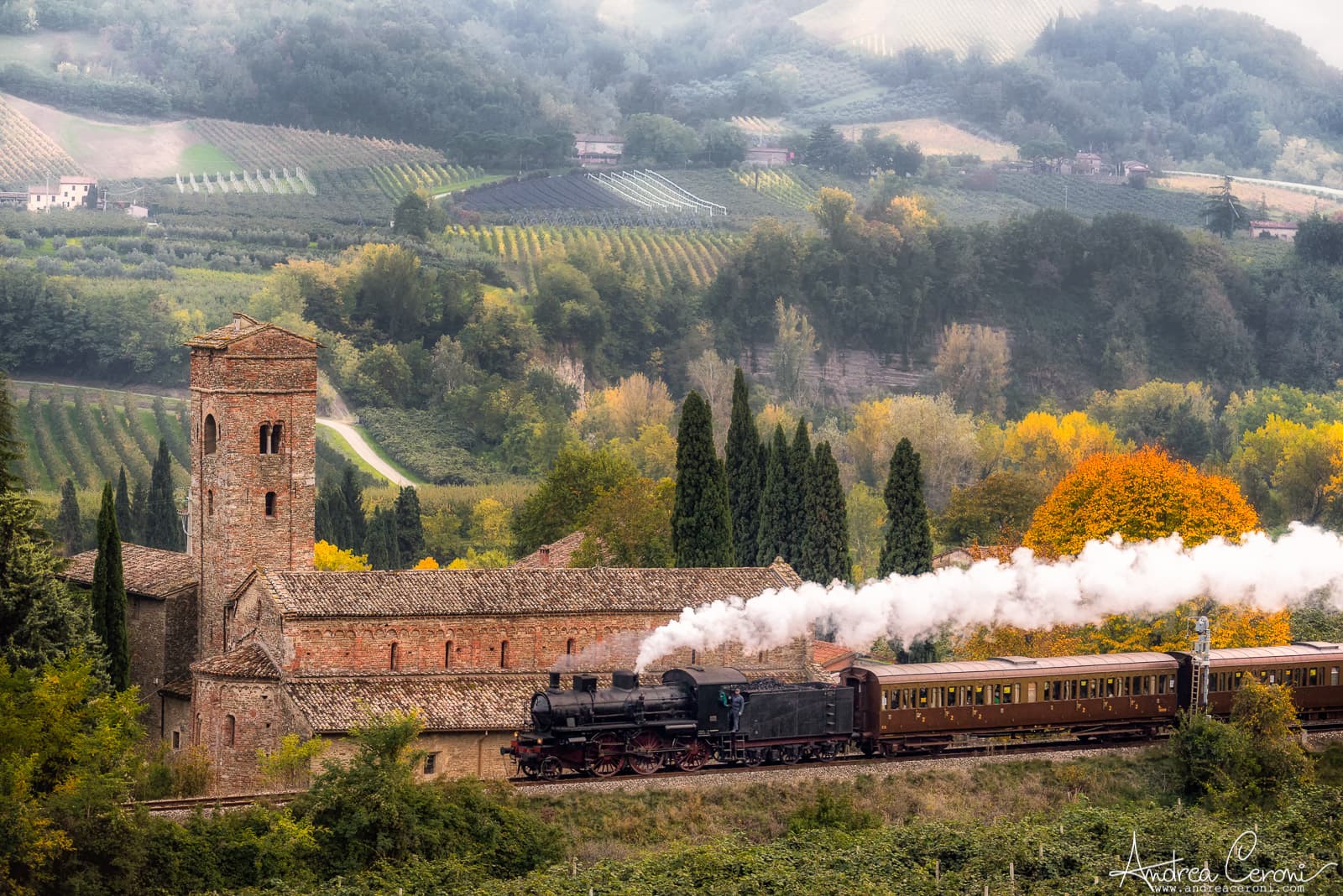
Brisighella Steam Train | Ph. Andrea Ceroni
The last port of call along the old Via Faentina before we set foot in Tuscany is the mediaeval spa town of BRISIGHELLA. This little gem nestles in the Valle del Lamone, in the Tuscan-Romagna Apennines.
The settlement dates back to 1290, when Lord Maghinardo built a defensive tower on the rocky spur where the Clock Tower now stands, to monitor movements and trade from Ghibelline Romagna to Guelph Florence.
Dante and Maghinardo first crossed paths in 1289, when they took part in the Battle of Campaldino. The poet then stayed at the castle in 1302 at the start of his wanderings, as Carducci notes in his Ode to the Church of Polenta.
Dante would have known these buildings:
- Via del Borgo / degli Asini: this 12th-century raised covered walkway is embedded inside one side of the street up on the third storey, lit by different-sized arches. This was the town’s oldest defensive fortification; there is nothing else like it anywhere in the world.
- Thò Parish Church: this is the oldest church in the Valle del Lamone, dating from the 5th century – the time of emperor’s daughter Galla Placidia. The building was enlarged in the 11th and 12th centuries. It is also known as the church of St John “in Ottavo”, as it stands eight miles along the Via Faventina, the Faenza–Etruria Roman road (as shown on the Peutinger Table, an ancient map).
Enjoy exploring the local nature and history of the Tuscan-Romagna Apennines in the Vena del Gesso Romagnola Regional Park.
The Dante’s Routes website has a wealth of extra information, including on the Tuscan legs to Marradi, Borgo San Lorenzo, Scarperia e San Piero, and Florence.
There’s so much to discover – cycling and trekking, food and wine, art and culture, exhibitions and shows – in the lands where Italy’s greatest poet lived out his life.
Author
You may also like
Dante’s Ravenna: the most famous places of the city in 11 stages
by Davide Marino /// September 7, 2018

Interested in our newsletter?
Every first of the month, an email (in Italian) with selected contents and upcoming events.
Hiking and Cycling Dante’s Way
by Margherita e Nick The Crowded Planet /// November 23, 2020
In the footsteps of Dante. By train, between Emilia-Romagna and Tuscany
by Simon Falvo /// November 30, 2020
The Divine Commedy in the Unesco Mosaics of Ravenna
by Davide Marino /// December 3, 2020
